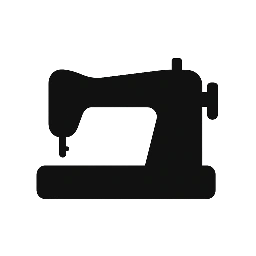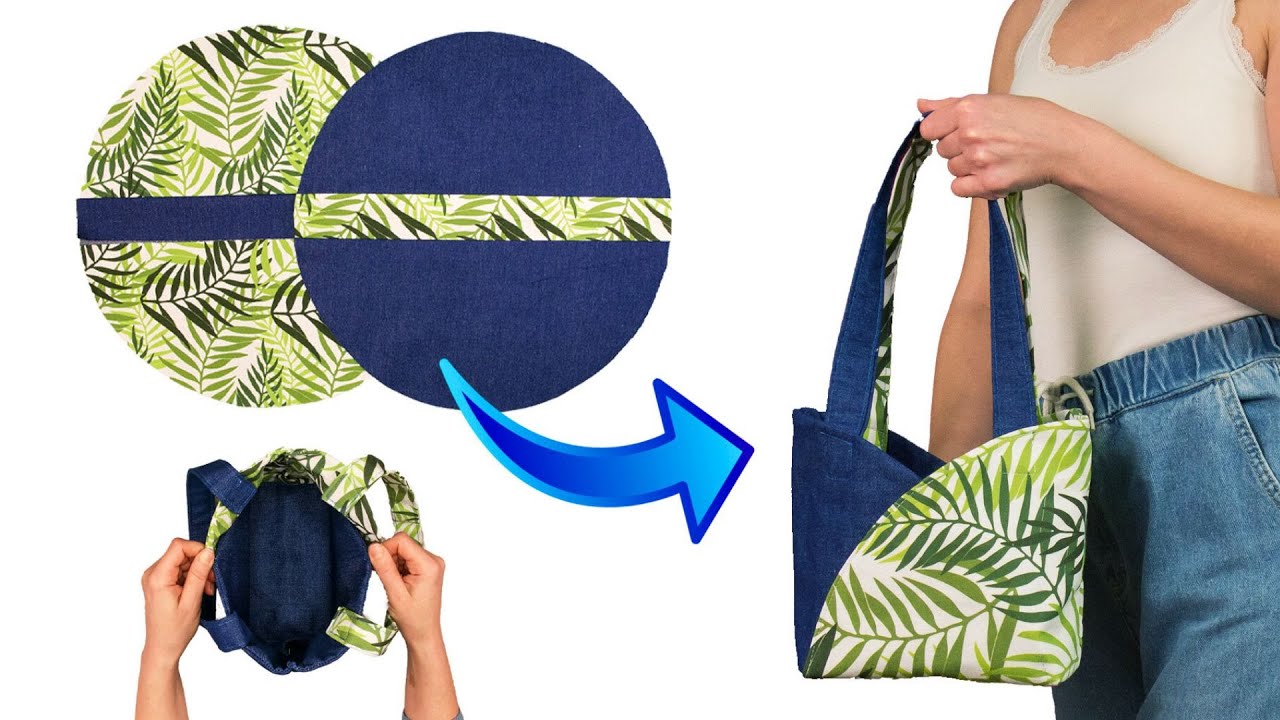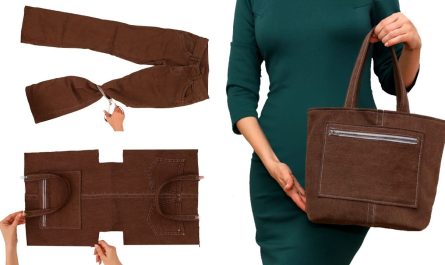Imagine a perfectly structured, square handbag that requires only two simple, identical rectangles of fabric, minimal stitching, and comes together with a magical final fold. This detailed tutorial, inspired by the ingenious “A simple bag sew with two pieces easily!” video from Miarti – Reuse, will guide you through creating this charming, boxy bag. The brilliance of this design is its hyper-efficient construction, using a single, long perimeter seam to attach the exterior and lining, followed by a clever corner fold that creates the 3D shape in seconds.

Get ready to transform simple fabric and a zipper into a highly professional-looking accessory that’s perfect for cosmetics, travel, or as a chic, minimalist clutch!
Why This “Single-Seam Box” Bag Will Be Your New Favorite
This design is a masterclass in minimalist construction and maximum style, offering several compelling reasons to make it your next sewing project:
- Two Pieces Only: The entire bag body (exterior and lining) is cut from just two main rectangles—no separate sides, bases, or complex pattern matching.
- Structured & Crisp: The heavy fusible interfacing is the secret to giving the bag its firm, expensive-looking structure.
- Wide, Stable Base: The clever folding technique creates a perfectly square, stable base that allows the pouch to stand on its own.
- Hyper-Fast Construction: With essentially only one long perimeter seam and a few corner stitches, this is one of the quickest structured bags you can make.
- Beginner-Friendly: The steps rely entirely on straight-line stitching and simple geometry, making it an ideal first project for new sewers.
Materials You’ll Need:
This pattern requires only a few main components, making it ideal for using up fabric remnants and remnants of interfacing.
- Main Exterior Fabric (Sturdy Cotton/Canvas): 1 piece, 44 cm x 30 cm.
- Lining Fabric (Cotton): 1 piece, 44 cm x 30 cm.
- Thick Fusible Interfacing/Felt Wadding: 1 piece, 44 cm x 30 cm. (Crucial for the bag’s structure; use heavy fusible fleece or dense interfacing.)
- Zipper: 1 piece, 30 cm long. (A sturdy zipper in a coordinating color.)
- Small Handle/D-Ring Tab (Optional): 1 piece, 10 cm x 4 cm.
- Matching Thread: High-quality polyester thread.
- Basic Sewing Tools: Sewing machine, fabric scissors or rotary cutter, ruler, fabric marker, pins or clips, iron, and ironing board.
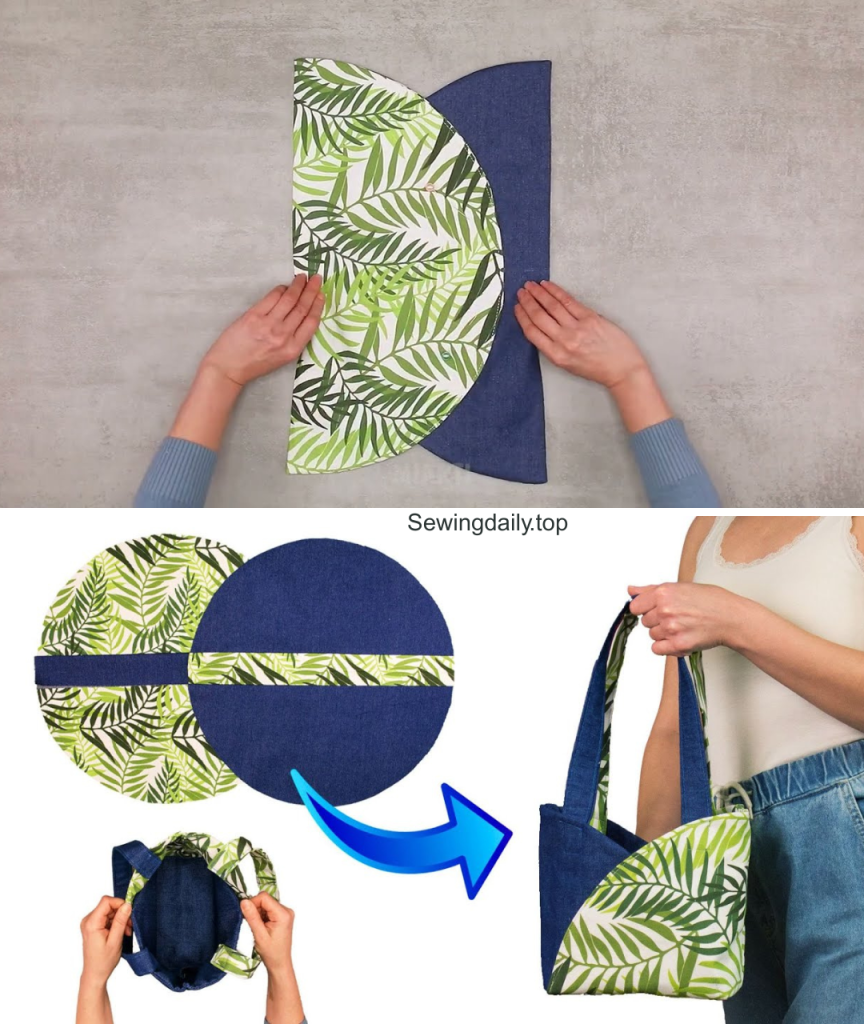
Step-by-Step Tutorial: Crafting Your “Single-Seam Box” Handbag
This tutorial is broken down into four efficient phases: preparation, zipper installation, body construction, and final shaping. All seam allowances are 1 cm unless otherwise stated.
Phase 1: Preparing the Structured Panels and Tabs
The first phase stabilizes the fabric and prepares any small accessories.
- Layer and Fuse the Exterior: Take the 44 cm x 30 cm Exterior Fabric. Iron the Thick Fusible Interfacing/Felt onto the wrong side, following the manufacturer’s instructions. This creates one single, stiff, structured panel.
- Prepare Handle Tab (Optional): Take the 10 cm x 4 cm tab. Fold the long edges inward and topstitch to create a finished strip. Fold it in half to create a loop and set it aside.
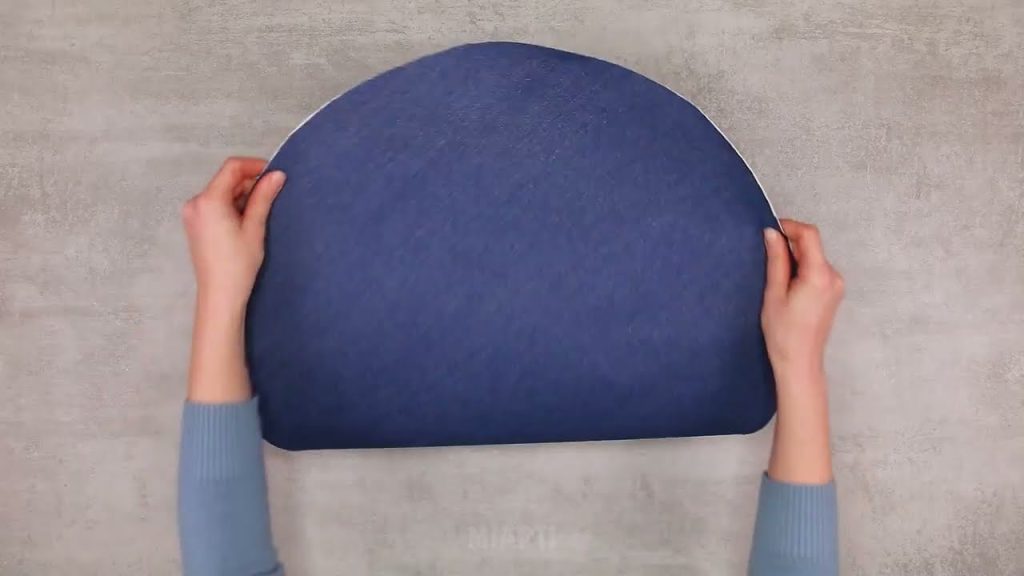
Phase 2: Installing the Zipper (The “Center” Method)
The zipper is placed across the middle of the panel’s width, which will form the top closure.
- Find Center and Cut: Fold the 44 cm x 30 cm Exterior Panel in half along the 44 cm length (making it 22 cm x 30 cm). This fold is the center line. Cut a straight line along this center fold, exactly the length of your zipper (30 cm). This creates a 30 cm opening for the zipper.
- Attach Zipper to Exterior: Center and pin the 30 cm Zipper into the 30 cm opening on the exterior panel, right sides facing (zipper tape to exterior fabric). Stitch all around the zipper opening to secure the zipper in place.
- Topstitch (Optional): Press the fabric away from the zipper teeth and topstitch along both sides of the zipper to secure the fabric and give a professional finish.
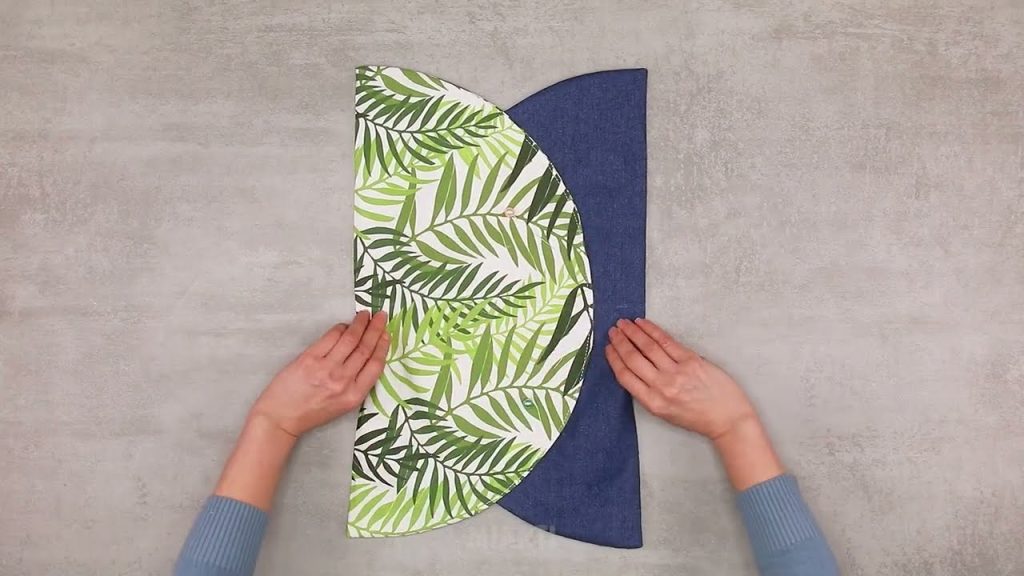
Phase 3: Joining Exterior and Lining (The Single Perimeter Seam)
The lining is attached to the exterior along the single, long perimeter.
- Pin Lining to Exterior: Place the 44 cm x 30 cm Lining Fabric on top of the Exterior Panel, right sides together (the zipper is now sandwiched inside). Pin all around the four 44 cm and 30 cm raw edges.
- Baste Tab: If using the handle tab, insert the raw ends of the tab loop onto the raw edge of the exterior panel, positioning it near one end of the zipper. Baste the tab in place.
- Sew Perimeter: Stitch all around the entire perimeter (148 cm total length). Leave a 15 cm opening along one of the long 44 cm edges for turning.
- Clip Corners: Trim the seam allowances at all four corners to reduce bulk.
- Turn and Press: Unzip the zipper. Reach into the turning hole and pull the entire rectangle right side out. Stitch the turning hole closed (by machine or hand). Press the entire square flat, ensuring the edges are crisp.

Phase 4: Folding and Finishing the Bag Shape
The final, geometric step is folding and stitching the corners to create the three-dimensional box.
- Find the Bottom Edge: Lay the finished 44 cm x 30 cm rectangle flat, with the zipper running across the center. The two 44 cm edges are the new sides, and the two 30 cm edges are the ends.
- Mark Side Folds: This is the key structural step. Pinch the fabric at the unstitched 30 cm side edges, flattening the fabric so the zipper ends are perfectly aligned. Press the new side folds to mark them.
- Create Boxed Corners: Measure and mark 5 cm from each corner point along the new side folds.
- Stitch the Folds: At each of the four corners, flatten the side fold so that the side seam aligns with the bottom edge. Pin the triangular section that is formed and stitch a straight line across this point. This stitch is placed 6 cm in from the corner (or whatever length creates your desired base depth). Stitch this line on all four corners.
- Final Polish: Turn the bag right side out. Push the boxed corners neatly.

Your unique “Single-Seam Box” Handbag is complete! This structured, fast, and elegant accessory is ready to organize your essentials with style.
Video tutorial:
